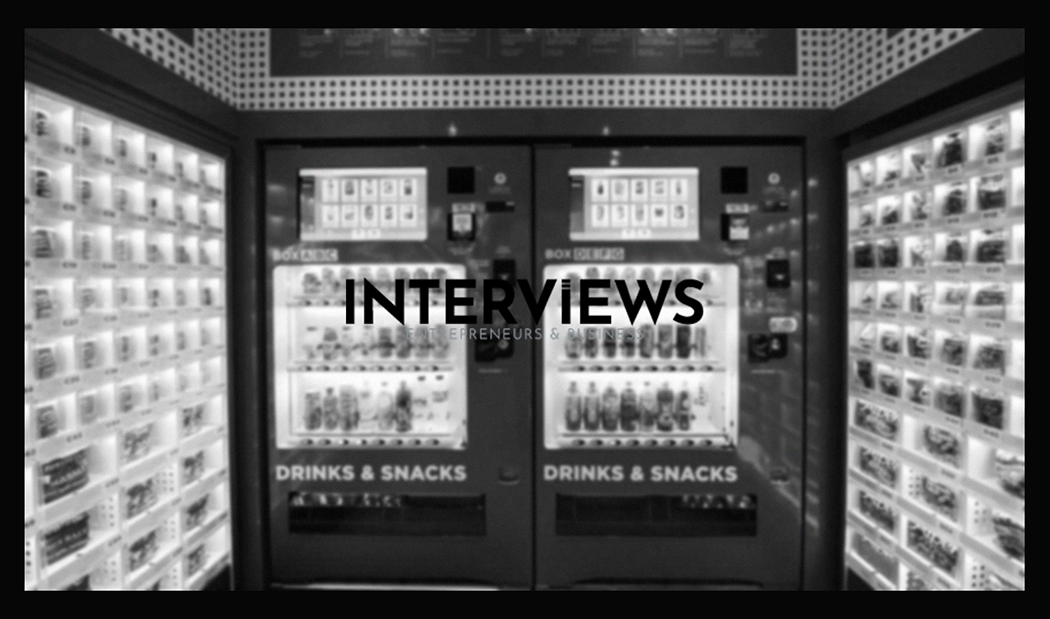Is a Vending Machine the Secret Money Tree You’ve Been Ignoring? Let’s Investigate.
Considering a business that avoids meetings or formal wear? Vending machines could be your solution. They may not be Wall Street, but they can generate cash, like a snack-dispensing ATM.
Show Me the Money: Vending Machine Profitability
Your metal friend can yield $5,000 to $6,000 annually. That’s good for something that just sits there. Monthly, expect over $300. Think of it as regular pocket money, but with snacks.
However, not all vending machines are the same. Profitability involves more than placing a machine and hoping. Key factors include:
- Location: High-traffic spots are ideal. Busy offices, hospitals, and plants work best. Quiet areas won’t do.
- Products: Old snacks won’t sell. Offer popular, trendy, and even healthy choices. That’s what people want.
- Maintenance: An empty machine makes no money. Regular checks and restocking are essential. Treat it well.
- Location Costs: Expect to pay commissions or rent for prime spots. It’s part of the deal.
A well-placed machine could bring in $50 to $100 daily. Gross margins can hit 30% to 50% if stocked wisely. One machine might earn $5 to $100 weekly. After costs, net profits can reach $100 to $300 monthly. Enough for dinner or more vending snacks.
Startup Costs: Less Than a Fancy Coffee Machine, Probably
Setting up a vending business isn’t like launching a rocket. You needn’t spend billions. Startup costs range from $2,000 to $10,000+. The extra cost depends on your goals.
Here’s how your cash breaks down:
- Machine Cost:
- Used/Refurbished: Budget-friendly, around $1,200 – $3,000.
- New: Shiny machines cost $3,000 – $10,000+.
- Bulk (candy/toys): Inexpensive options are under $500.
- Inventory: Stocking costs vary. Plan for hundreds or thousands, based on your choices.
- Other Costs:
- Moving: Machines are heavy. Moving fees apply.
- Cash and Coins: You need change for transactions.
- Permits and Insurance: Essential to operate legally and protect yourself.
- Location Fees: Paying for parking your machine.
Funding options include:
- Personal Savings: Ideal if you have cash. No interest or loan hassles.
- Small Business Loans: Banks may approve vending machines as a good investment.
- Business Credit Cards: Earn points while scoring snack sales.
- Crowdfunding: The internet helps raise funds.
Start small. An initial investment under $2,000 is practical. Grow as you gain vending experience.
Vending Machine Business: More Than Just Snacks, It’s a Real Thing
Is owning vending machines a legitimate business? Yes! Profit margins make it viable. It might be more practical than being an influencer.
To earn a living? You will need many machines. Aim for 50-100+. You’ll be a vending machine mogul soon.
Success rates? About 80% on average. Less risky than running a themed restaurant. Why are they successful? Here’s why:
- Low Overhead: No servers or fancy décor needed. Just a box with snacks.
- Passive Income: Earn money while offline. Or during TV time.
- Scalability: From one machine to a large operation. Potential is great.
- High Demand: People always crave snacks and drinks. Vending meets that need.
Keys for vending success:
- Location: High traffic means high sales. It’s key.
- Product Knowledge: Know what sells well.
- Maintenance: A well-kept machine attracts customers and profits.
- Card Payments: Accepting cards increases sales. Cash is less popular now.
This could be a profitable side gig. Vending machines have low startup costs, passive income possibilities, and flexible schedules. What’s not to enjoy?
However, challenges exist:
- Initial Costs: Machines aren’t free. They require investment.
- Location Limitations: Machines stay put. A poor location means poor business.
- Competition: You face other machines and stores.
- Cash Management: Handling money can be annoying. Like being a pirate.
- Operating Expenses: Rent and restocking incur costs.
- Theft Risks: Vending machines can attract theft or damage. Secure them well.
Snack Attack: What to Sell for Maximum Moolah
Wondering what to stock in these cash boxes? Let’s break down inventory possibilities.
Most profitable items include:
- Water: Surprisingly profitable with margins up to 86%.
- Candy: A classic choice for immediate gratification.
- Soda: Popular and bubbly for caffeine seekers.
- Chips: Salty and crunchy snacks that many love.
- Energy Drinks: Highly sought after in offices and gyms.
Snacks and drinks are vital components. But variety is essential. Consider:
- Healthy Alternatives: Granola bars, nuts, protein snacks.
- Fresh Food: Sandwiches or salads with the right machine setup.
- Local Specialties: Unique items stand out more.
- Seasonal Goods: Offer hot chocolate in winter, lemonade in summer.
- Convenience Items: Pain relievers or phone chargers; think beyond only food.
Your best-sellers include chips, sweet snacks, granola bars, and protein bars for health buffs.
Location Revisited (Because It’s That Important)
Location impacts 90% of vending success. An isolated machine won’t sell much. High-traffic areas are crucial.
Best locations include:
- Manufacturing Facilities: Workers seek snacks during breaks.
- Offices: Afternoon cravings demand attention. Cater to these customers.
- Apartment Complexes: Easy access for residents.
- Hospitals: Long shifts create hungry visitors needing sustenance.
- Nursing Facilities: Constant potential clients around the clock.
- Car Dealerships: Waiting customers enjoy snacks.
- Hotels: Travellers require convenient meal options.
- Gyms: Post-exercise snacks are very in-demand.
- Schools: Teenage appetites are significant (check rules).
- Malls: Shoppers often seek quick eats. Vending serves them.
Aim for 24/7 locations. Extended hours improve sales potential.
Boost your sales. Think about demographics. Who will buy your snacks? Also, check the competition. Are vending machines everywhere?
Contracts and Legal Stuff: The Less Fun, But Crucial Parts
Contracts and legal matters are not thrilling. But they are important. Here’s a vending contract breakdown:
- Find Locations: Look for potential spots. Be a location detective.
- Contact Owners: Speak with property managers. Share your vending vision.
- Negotiate Terms: Talk about rent, commissions, and duties. Haggling is part of business.
- Sign the Deal: Make it official. Use ink or digital signatures.
- Install Machines: Set up your machines. Place those metal boxes.
- Maintain and Restock: Keep things moving. Happy machines lead to profits.
Rent or commission? Pay the owner a cut. You’ll see 5-20% commissions. Think of it as a location fee.
Legal structure? An LLC (Limited Liability Company) is wise. It protects your assets from business risks.
Insurance? Absolutely. For theft, damage, and lawsuits. People love to sue. Better to be careful.
Permits and licenses? You need them. Skipping this means fines and angry officials.
Vending Machine Costs & Keeping Things Running Smoothly
More costs? Yes. Vending machines need maintenance. They aren’t free after purchase.
Leasing options exist. Renting a machine starts at $100-$250 monthly. Great for getting started without a huge initial cost.
Let’s recap machine costs:
- Combo Machines (snacks and drinks): $5,000–$7,500.
- Specialty Machines (coffee, ice cream): $8,000–$10,000.
Regular upkeep is essential for machine life. Think of it as healthcare. Machines can last 10-15 years with proper care. Key weak points? Money receptors (coin and bill validators). They jam easily.
ROI: When Do You See the Green?
Return on Investment – the big question. When do you make money? Usually, payback occurs in 12-14 months. Not an instant fortune, but doable.
Factors affecting payback speed? Consider these:
- Location Matters: Good spots mean quicker payback.
- Popular Products: Fast-selling items equal quick profits.
- Maintenance Counts: Broken machines lead to losses.
- COGS (Cost of Goods Sold): Buy snacks wholesale to improve margins.
- Operating Expenses: Manage costs to enhance profits.
Choice locations can lead to 6-month payback. Imagine getting your investment back in half a year. Vending machines can be quick cash sources.
Getting Started: The Vending Machine Adventure Begins
Ready to dive into this business? Here’s a checklist:
- Market Research: Know who will buy from you and what they want.
- Choose Products: Decide on snacks or drinks. Your business awaits.
- Choose Locations: Find high-traffic areas. Always think about location.
- Choose a Business Model: Buy or lease machines? Consider your options.
- Write a Business Plan: Detail your goals and strategies.
- Permits and Licenses: Don’t forget this crucial step.
- Invest and Install: Buy and set up your machines. Let the vending begin.
- Stock and Maintain: Keep machines full. Maintain their function.
Filling and Stocking: Keeping the Machine Fed (and Profitable)
Filling costs? Expect about $200 to $500. Snack machines need $200 to $400. Beverage machines need $300 to $500. Buy in bulk to save money.
Potential Pitfalls: Vending Machine Vexations
Vending machines have challenges. Potential issues exist:
- Outdated Machines & No Maintenance: Neglect leads to untrustworthy machines.
- Ignoring Problems: Small issues can turn into big headaches. Fix them quickly.
- Bad Location Risks: Poor placement means poor sales. Reassess your strategy.
- High Traffic Challenges: Busy places mean wear and tear. More maintenance may be required.
Insurance Essentials: Protecting Your Vending Venture
Insurance is necessary. Accidents happen. Types of coverage you need include:
- General Liability Insurance: Covers injuries related to your machines.
- Business Owner’s Policy (BOP): Combines liability and property coverage.
BOPs average around $58 monthly, or $698 yearly. A small cost for safety and financial security.
So, are vending machines a secret cash source? Not quite a tree, but a solid income stream. With the right choices and effort, your vending machine can earn steady income. Remember, focus on location first. Consider stocking good products too.





